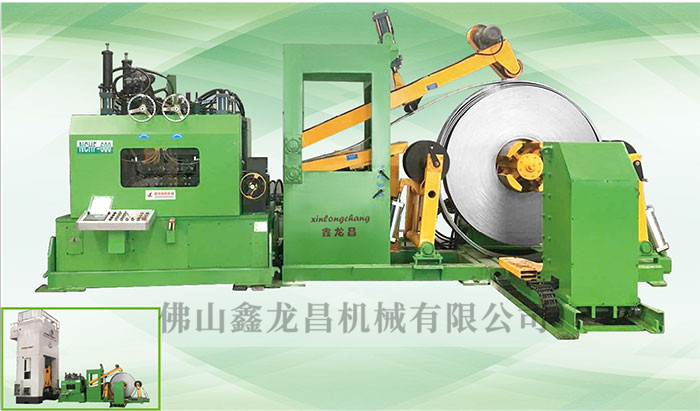Common problems in the design and production of three-in-one feeders
The three-in-one feeder has the advantages of high degree of automation, good leveling and feeding accuracy, high synchronization performance with the punch machine, easy operation, great saving of labor costs and floor space, etc. It has won the favor of more and more Chongle customers. favor. With the increase in demand, more and more domestic manufacturers are engaged in the production of three-in-one feeders, but the resulting quality has also shown uneven performance, especially in design and production. The more questions there are.
The three-in-one feeder is mainly composed of two functional components: the material rack part and the leveling and feeding part. The main problem in the design occurs in the leveling and feeding part. The leveling and feeding part of the three-in-one feeder includes the front feeding mechanism, It is composed of a middle leveling mechanism, a rear feeding mechanism and a driving device.
Question 1: In the three-in-one feeder drive device, the servo motor generally controls the feeding roller to feed the material. Since the output torque of the servo motor itself is small and cannot meet the needs of use, a certain deceleration must be performed between the feeding roller and the servo motor. In order to achieve the use requirements of increasing holding moment. Generally speaking, in addition to using a reducer for deceleration, a two-stage synchronous wheel is basically used for deceleration or a one-stage synchronous wheel is used for deceleration. In the actual manufacturing and use process, due to structural differences, if a two-stage synchronous wheel is used for deceleration, , it will be inconvenient during installation. At the same time, it will be troublesome to replace the synchronous belt after the synchronous belt is worn. If a first-level step wheel is used to reduce the speed, in actual use, due to the large deceleration ratio and the small number of meshing teeth of the synchronous belt, resulting in The reduction in transmission rate is not very effective.
Question 2: During the feeding process of the three-in-one feeder, in order to meet the accuracy requirements, it is generally required to set positioning pins in the mold to eliminate the feeding error each time. Therefore, the feeding equipment needs to have a relaxation function to ensure that each feeding After the step is completed, the feeding rod needs to be relaxed to reposition each product to eliminate the accumulated error of each feeding. During the actual use of the three-in-one feeder, it was found that in actual relaxation, only the middle relaxation and the rear relaxation are needed to fully meet the usage requirements. The front relaxation can only be used during the coiling process, and when relaxing, if the front relaxation is used, If both the middle and the back are relaxed, it will be difficult to control the relaxing action to be completely unified, and the front relaxing roller will only be pressed down to pinch and feed the material when the material is more elastic or thicker for the convenience of feeding.
Question 3: During the use of the three-in-one feeder, since the power source used when relaxing is air pressure, and it is generally used in conjunction with a punch press, vibration will inevitably occur, and the related positioning of the three-in-one often occurs due to vibration. The screws will become loose and affect the leveling and feeding accuracy. Therefore, the current method is to directly process the countersunk hole on the side plate and tap the positioning shaft end to fix the distance between the two side plates, or do not add a positioning shaft. This method is not conducive to Adjust the positioning axis to eliminate errors
During the design and production of the two-in-one feeder, detailed optimization and improvements were made to address the three major problems faced by Tang Jian. It adopts a transmission device with a first-level synchronous wheel reduction and then a transmission-level gear reduction. It is not only easy to install and maintain, but also helps improve the efficiency of the machine. Transmission efficiency, feeding premise cylinder is changed from automatic valve control to manual valve control, which facilitates user operation and saves costs; the side plate positioning shaft is installed to enable effective positioning, and the positioning shaft can be adjusted to eliminate errors.

